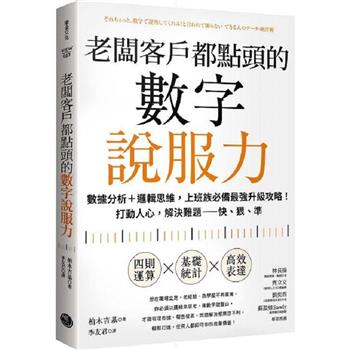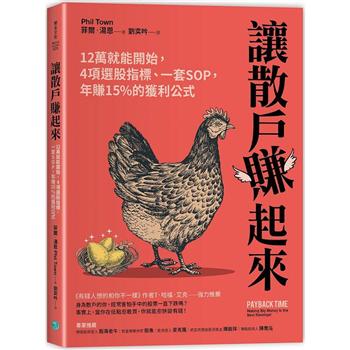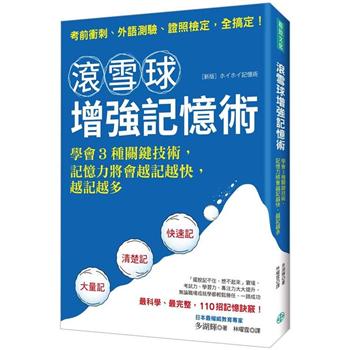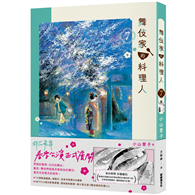佛教是一個富有科學實證精神與批判精神的理性宗教,因為佛教正法所宣說的解脫智慧與實相智慧,完全符合有情生命與器世間所涉及現象界與實相界的事實真相,因此佛教實證與批判的內涵是函蓋一切世間法與出世間法。所以佛教經典中經常可見釋迦牟尼佛勸說眾生「宜捨此惡邪見」、「不邪見」,乃至為救護眾生而勸告佛弟子「勤破邪見」、「勝智摧邪智」;也就是以實證第八識如來藏心的解脫智慧與實相智慧,批判摧滅偏邪而不符法界實相的錯誤見解,以期利他與自利。這是大乘佛教獨有的殊勝智慧,不但不共於二乘聖者,也不共於一切外道、宗教或純粹的學術研究。
在大乘佛教的不同宗派中,都可以看到以同樣的實證精神與批判精神作為核心價值。例如唯識宗的玄奘大師在《成唯識論》中主張「若不摧邪難以顯正」,或如中國禪宗許多證悟祖師「拈提古今」,都是具體的案例。玄奘大師與禪宗祖師們之所以能夠摧邪顯正、拈提古今,就是因為實證第八識如來藏心,甚至因此發起唯識種智智慧。特別是禪宗所強調明心與見性的實證,正是佛教之賢聖能夠以「勝智摧邪智」的智慧根源。
然而,也有假冒佛教的外道宗派,錯以為辨正佛教義理的能力,係來自於學術式的、思辯式的、固定問答式的「辯經訓練」,並以此自豪。例如,西藏流亡到印度的達賴偽政府所弘傳本質只是雙身法與鬼神信仰的「藏傳佛教」,卻將佛教的批判精神與批判能力,錯誤地歸屬於「辯經訓練」。其實,佛法中以「勝智摧邪智」的智慧與能力,並不是透過類似達賴喇嘛所設立達蘭薩拉辯經學院的「辯經訓練」而來;而是以科學實證的精神與方法驗證蘊處界的虛妄不實,以及蘊處界之上別有第八識如來藏心真實存在;因此實證解脫智慧與實相智慧而發起擇法眼,與學術訓練、思辯訓練或問答訓練毫無關係。
繼承自應成派中觀的六識論思想而作的辯經訓練,無論如何訓練思辯、研究與問答,終不離六識虛妄的言語境界,終不離夜夜自我斷滅的虛妄境界,如何可能解脫生死流轉?不能解脫生死,又有何殊勝之處而能勝他呢?因此依於辯經訓練之「藏傳佛教」,於雙身法之邪淫或六識之斷滅等本質,終不能自辯而無法使之轉變為清淨、常住。如此依於虛妄六識所建立的辯經訓練,何有批判及自省之能力可言?如此依於人類有情皆能實證的六識論,與外道凡夫並無不同,而沒有任何殊勝的智慧可言。如此同於外道凡夫的辯經訓練,顯然沒有不共於外道凡夫的解脫智慧與實相智慧,因此可知達賴喇嘛建立達蘭薩拉辯經學院所弘揚的「藏傳佛教」,根本不屬於佛教的任何宗派,其實只是貪著世間淫慾而迷信鬼神的喇嘛教。
由於大乘佛教從天竺流傳至東土,並在震旦從唐宋二代以降,以生動活潑的禪宗面貌,開展出興盛的大乘文化。而禪宗不但標舉明心見性的實證目標,並且展現「拈提古今」的批判精神,因此禪宗文化頗能代表大乘佛教實證與批判的核心精神。然而批判精神卻不能離開佛教實證的前提而存在,若離佛教實證的前提,則是落入純學術想像之中。如同日本「批判佛教」松本史朗之類,就是犯下這個過失,使他們對正統佛教的批判淪落到荒謬絕倫的地步。由此之故,本期學報以「中國禪宗、批判佛教」作為主題,並且採用三篇相關的論文如下:
1、中國禪宗探源—並略論三乘聖者同聞大乘經典(蔡禮政)
2、以實證佛學探究中國禪宗的禪法傳承本質—以蕭平實老師的義學主張為範式(張志成)
3、「批判佛教」思潮之「基體」論謬誤剖析(袁經文)
章節試閱
一、緒論
佛教是實證法界唯一實相的整體教法,禪宗是佛教眾多宗派之一。本文將中國禪宗視為整體佛教的重要成分之一,或者是審視佛教的某種角度,而不是可以從佛教中分離孤立的教法,也不是與其他宗派彼此扞格的教法。因為錯以為宗派間教法彼此扞格的宗派之分,將使整體的佛教成為支離破碎、分崩離析各行其是的純信仰宗教,因而喪失佛教具有實證法界實相的科學性、理性與智慧性,不可能通達佛學。
本文雖然在禪宗冠上「中國」作為標示,其目的是為了顯示:佛教作為悲憫一切眾生的理性宗教,所以在實證法界實相的科學本質下,可以有適應教化地區而別具中國的民族特色。當佛教東來大化於震旦,由此方眾生所吸收內化而融於生活後,反而成為震旦眾生可以傲視於全世界的特有思想與文化,成為中國獨有的文化資產;因此依於世俗語言而冠上「中國」,以區別佛教適應各個教化區域之方便流布而契合於佛陀教法,並且據以探討「中國禪宗」的源流、內涵與本質。……(待續)
二、以實證性批判探源於阿含部經典之意涵
本文將直探中國禪宗源流至阿含部經典,然其意義與某些學者有所不同。有些學者探源大乘教法於阿含部經典的目的,是為了證明大乘教法是聲聞部派佛教之後才興起的理論。例如,釋印順著作《唯識學探源》、《性空學探源》、〈如來藏思想探源〉等等書籍與文章,將唯識學、性空學、如來藏學等等大乘教法皆探源於阿含部少數經典及聲聞部派佛教多數論著,以宣揚其「大乘非佛說」的主張。譬如在《性空學探源》中,釋印順開宗明義地說:
「性空」,根原於阿含經,孕育於部派的(廣義的)阿毘曇論;大乘空相應經,開始發展出雄渾博大的深觀;聖龍樹承受了初期大乘,主要是《般若經》的「大分深義」,直探阿含經的本義,抉擇阿毘曇,樹立中道的性空(唯名)論。
釋印順上述的主張有極多錯謬,但本文僅針對其中探源於阿含經的意義進行探討,其餘皆略不申論。釋印順主張:性空學「根原」於阿含經,要經過聲聞部派的「孕育」,以及初期大乘的「發展」,最後才「樹立」中道的性空學。換言之,釋印順主張「性空根原於阿含經」是說,性空學在佛世時佛陀只有略說而不完整、不詳細,在部派佛教時期由聲聞法中分裂出來的部派僧人的論說,才孕育出性空學說;直至「初期大乘」時,才「樹立中道的性空(唯名)論」。因此,釋印順主張性空學不是佛陀親口所說,只是聲聞部派後來演變發展出現了大乘菩薩,才發展出大乘法的性空學說,因此主張「大乘非佛說」。但如果「根原於阿含經」所代表的歷史意義是佛陀只有略說而不完整、不詳細,那麼阿含經中應該要有諸比丘在佛陀入滅時發起疑惑與提問的文獻證據。……(待續)
以實證佛學探究中國禪宗的禪法傳承本質
—以蕭平實老師的義學主張為範式
摘要
中國禪宗的特色是「教外別傳」、「明心見性」的禪法傳承,燈史的祖統說反映出禪宗的禪法傳承最重視的是正確的實證。來自印度佛教菩提達摩的禪法傳承,經由中國傳統文化思想的影響和為適應社會習俗、文化背景,形成創新的施化方便與傳法模式,其表相的面目似乎反映出不同於傳統印度佛教的本質。呂澂、印順法師、「批判佛教」認為中國佛教和禪宗是如來藏思想或「本覺說」,其本質與印度佛教不同;而禪宗在中國的發展有思想融合、演變乃至玄學化、老莊化的現象。
本文以為,過去學界探究佛法和禪法的本質,多偏重於「以思想哲理為本」的方法論,明顯地產生視野侷限和看法偏差的結果;而運用「以實證詮釋為本」的「實證佛學」為方法論,其視野之深廣度方能解讀出佛法和禪宗中的一貫本質。本文除提出「實證佛學」的概念與意涵,並以為正覺同修會蕭平實老師的「以如來藏八識論為本」的實證佛學,是長期以來瞭解禪宗最佳的義學範式,因此文中兼略述其義學大綱及其對禪宗的判攝;並從「實證佛學」的角度,指出「以思想哲理為本」的方法論所產生的侷限與偏差,以及呂澂等對中國佛教「本覺說」和禪法的看法—以為「如來藏說」或「本覺說」偏離正統印度佛教而本質是相似佛教,是一個根本性的錯謬。反而「如來藏說」與二轉經論,相對於《阿含經》是更完整究竟的義學;而以「如來藏說」為根本的中國佛教和禪宗,其本質與印度大乘佛教是殊無二致的。
本文最後以「實證佛學」的詮釋指出,中國禪宗的禪法傳承是以實證如來藏為中心的施設;而禪宗的施化方便雖然呈現不同思想、思想演變或融合的表相,其實證本質其實是一貫的。禪宗的「開悟明心」即是大乘佛教的「見道」,其內涵是「證解第八識如來藏」;而相對於其他「藉教悟宗」的教法,禪宗的「教外別傳」有其特勝之參禪方便引導學人快速明心,實證印度大乘佛教義學。中國禪宗,其禪法不論名之為「如來禪」或「祖師禪」,修道的內涵與次第皆是「頓悟漸修」;開悟或見道是「頓悟」的,亦即一念相應頓見第八識心體的所在與全體(總相),悟後才進入「漸修」的修道過程。完整禪宗的悟後起修的內容是轉依真心如來藏不生不滅、自性清淨的真如體性以修除煩惱障,以及深入如來藏所含藏之一切種子功能差別以破除所知障,修行的終極目標皆是圓滿的佛位,成為實證佛學而非思想推理的佛學。因此由實證的角度觀之,中國禪宗禪法傳承的本質與內涵其實與印度中觀、唯識、如來藏系的大乘佛法是一致的。
關鍵字:實證佛學、禪宗、禪法傳承、實證詮釋學、第八識、如來藏、阿賴耶識、蕭平實、義學、本覺說
內文:
一、前言
中國禪宗在中國文化與民族宗教中的地位,如太虛法師所說「中國佛學之特質在禪」;「蓋中國自晚唐、五代以來之佛教,可謂完全是禪宗之佛教;禪風之所播,不惟遍及佛教之各宗,且儒家宋、明理學,道家之性命雙修,亦無不受禪宗之醞釀而成者。故禪宗者,中國唐、宋以來道德文化之根源也。」亦如禪宗學者楊曾文所說,佛教從印度傳入中國後,演變為中國民族的宗教,在隋唐時期形成的佛教宗派中,最富有民族特色並且影響較大的宗派有天台宗、華嚴宗和禪宗。進入宋代以後,唯有禪宗興盛,並在許多層面從整體上對中國漢語系佛教產生極為深遠的影響。以至於在明代以後,禪宗在已經融合型的漢語系佛教中占據了主體的地位。
中國禪宗的發展,大體經歷了醞釀期、初創期、南北宗並立期和南宗獨盛期。從被奉為初祖的菩提達摩,到惠可、僧璨是醞釀期(或稱為禪宗的史前時期)。北朝時禪宗醞釀期的達摩禪法,於佛教中並不是占有主流的地位;至唐朝時,由道信、弘忍於黃梅開創的「東山法門」,在中國禪宗的發展上,可說扮演一個承先啟後的樞紐角色,經道信、弘忍的努力,禪宗宗派的規模才算正式成立。弘忍的弟子慧能和神秀,以及後繼者神會、普寂等,分別開展出世稱的南、北宗;後來源自慧能法系的馬祖、石頭系傳承傳播迅速,於唐末時取得了禪宗的正統地位。
成為禪宗主流的南宗,於唐末五代時期產生五個流派,即從南嶽懷讓的法系形成臨濟宗、溈仰宗;從青原行思的法系形成曹洞宗、雲門宗和法眼宗,此即「禪門五宗」,或稱「禪門五家」(若再加上北宋時臨濟宗分出的黃龍派和楊岐派,則有「五家七宗」的說法)。從此,中國禪宗進入五宗迭興,相繼盛行的時期。在五宗當中,流傳時間長並且影響也大的是臨濟宗、曹洞宗和雲門宗。由於五宗禪法皆源自慧能,而慧能得法自弘忍,因此可以說中國禪宗主流的禪法全來自於「東山法門」也不為過;而中國禪宗的發展史也可說是「東山法門」的繼承與發展史。……(待續)
二、祖統說和禪法傳承—正統禪法的傳承與印證
以「教外別傳」、「以心傳心」為特色的中國禪宗,特別重視師資之間的禪法傳承世系。中國禪宗的開創者,一般公認是菩提達摩。達摩前後的傳承,一般流行的是南宗《六祖壇經》中「西天二十八祖」和「中土六祖」的說法,《景德傳燈錄》等「燈史」也繼承此祖統說。但有些學者懷疑,此「西天二十八祖」和「中土六祖」禪法傳承的說法是可疑的。近代出土的敦煌文獻也顯示北宗的說法有所不同,《唐中岳沙門釋法如禪師行狀》之碑文,提出了中國禪宗最早的付法傳承的祖統說,其中說:印度的傳法世系是佛傳阿難,阿難傳末田地,末田地傳舍那婆思;其後菩提達摩來華「入魏傳可,可傳粲,粲傳信,信傳忍,忍傳如」。杜朏的《傳法寶紀》繼承此種說法並加以發展,說菩提達摩傳惠可以後,「惠可傳僧璨,僧璨傳道信,道信傳弘忍,弘忍傳法如,法如及乎大通(案:即神秀)」,這是以法如作為達摩禪法傳承的第六祖,神秀為第七祖。李邕的《嵩岳寺碑》(《全唐文》卷263)和比《傳法寶紀》稍早淨覺作的《楞伽師資記》,則以神秀繼承弘忍,普寂繼承神秀;然而《楞伽師資記》在達摩之前更立《楞伽經》的譯者求那跋陀羅為中土初祖,同時又說弘忍的十大弟子「俱承禪師後」。因此,早期禪宗師徒之間的付法傳承世系也許並不存在嚴格的嫡庶差別;而禪宗史中的傳法祖統說大概受作者所屬的派系或觀點的制約。……(待續)
「批判佛教」思潮之「基體」論謬誤剖析
摘要
本文將「批判佛教」思潮的實質,概括為四個特徵「一個靶的,兩個淵源,視角異化泛化,佛教學養不實」;後一特徵貫串於前三個特徵中。
松本史朗將經籍中之「界」義,等價判攝為「基體」;再以梵我論思想,填充「基體」論;然後以此「基體」論分判大乘佛教的唯識和如來藏思想為外道梵論思想。由此,他提出要掀起清除中國傳統佛教對日本佛教影響的運動,完全否決中國傳統佛教中禪宗和華嚴宗等宗派的合法性地位。
本文建構基體(不帶引號)概念,除了起到不認可松本「基體」(帶引號)概念的作用外,還有如下意義:其一,對經典表述「實體」權說的理解和肯認。其二,安立基體並隨之予以揚棄,表顯出語言的無奈,彰顯「文字般若」的非究竟性。其三,起到評判點明以往對松本進行回應駁斥的諸種觀點之乏力及其原因所在,即不敢承認「涅槃寂靜」這一基體實性,大有似乎承認之就必定是「基體」乃至是「梵我」論;確立基體概念將便於指出松本史朗之謬誤能馳騁多年的原因。
松本史朗錯誤的本質或核心思路,實質就是以佛教「三法印」中的前兩個「法印」(將之轉化為「緣起說」和「無我說」後)來反對第三個「法印」—「涅槃寂靜」;這正是他批判「界」義、建立「基體論」立場的根本依託所在。
從松本的思路和行文可知,當唯識學將第八識和無漏法種以及如來藏等,視為是「法爾而有」、本來具足時,松本史朗就已在認為,這正是具有實體性的梵或我論;松本史朗對於一至三轉法輪經中所說,第八識如來藏異於大梵、異於常見我之種種差異,視而不見。
從《奧義書》和《梵經》等典型外道梵我論經籍,以其對梵我論的權威性解釋,能夠與如來藏正義作出比較和分判。
松本史朗推崇十二支緣起,并認為「基體論」與之相矛盾;松本所持的「緣起說」,若能涵括賴耶緣起和法界緣起等,便並未背棄第三法印「涅槃寂靜」;「十二支緣起」稟具「界」義。
松本將「法界圓融」義作了佛教外行的膚淺性解讀;日本社會的不平等性,被「批判佛教」論者視為是「基體」的總體發源造成,這是並未認清佛教的立教本質所致。
任何以哲學的範式試圖摹繪或捆綁佛教義理的作法都將證明是愚昧的,因為佛教所具有的與某些哲學思想或範式的表相相似性,並不能反映出佛教體系的真實本質。
松本以及支持「批判佛教」思潮的諸多介入學者,幾乎是以文獻學、語言學上的積累和思路,展開諸多細枝末節且是繁雜的考證論述,系統性的佛學知見往往闕如。他們在研究方法上存在著兩點通病。
關鍵字:批判佛教、松本史朗、基體、唯識、如來藏、梵我、三法印、十二支緣起
內文:
一、緒論
日本駒澤大學的袴谷憲昭和松本史朗等人,自上世紀八十年代以降,掀起「批判佛教」思潮;隨後,思潮蔓延日本、歐美及至港臺、大陸。此股旋風對國際佛教學術界和教界造成極大影響。
近年,本人開始關注該思潮的起因狀態,留意海內外對這一事件的聚焦和展開。在參加各類學術會議期間,曾與日本花園大學、臺灣清華大學、香港中文大學和大陸中國社會科學院世界宗教研究所、浙江某大學等多位佛教專家學者以及一些佛教出家法師進行過交流,獲知一些信息或姿態,現將之總結歸陳如下:
有認為「批判佛教」思潮抨擊了中國傳統佛教含天臺宗、華嚴宗和禪宗等要害,中國佛教乃至印度本土的唯識和如來藏系均需反思,宜應回歸到真正佛教上;或認為,「批判佛教」思潮與對此思潮的回應辨論目前處於膠著,雙方均難以服人;或認為,對「批判佛教」思潮的學術關注已不是目前佛教研究的熱點重點;或篤信一貫研究的中國傳統佛教的合理地位,認為不必理會「批判佛教」思潮的任何觀點;也有認為,辯論貴在繁榮學術,不必一定要從中得出對錯嚴謹的結論。
這些觀點,儘管因於本人非正式場合的單方提起而有隨機、散在的作答表徵,但卻深具學術典型,能讓人從中窺出種種學術狀況之折射。本人感到,凡此種種學術姿態和現狀,令人失望堪憂;學術界的探究職責和佛學水準,似乎均需潛研經典後的整體提升。此中也在表明,「批判佛教」思潮的理論思辨應是淵深精密;近三十年來,似乎不易被系列反對者動搖;大陸也有學者進行駁斥,但或捉襟見肘或削足適履,反為松本史朗本人回應之回函所駁斥,終難自立其義。
面對這一來勢兇猛、體系駁雜、不斷批判中國佛教的思想潮流,以及附和者和論文論著日漸增多的狀況,要對之進行逐一梳理和揭批,牽涉面較廣,並需揭批者不斷動態跟進;這將是異常艱巨的長期性和團隊性的任務。本文在此,只能針對接觸到的或已經閱訖之資料進行初步回應。
經審閱和思考有關資料,本人認為,可以將「批判佛教」思潮的實質,概括為「一個靶的,兩個淵源,視角異化泛化,佛教學養不實」等四個特徵;而且,後一特徵貫串見顯於前三個特徵中。……(待續)
二、「批判佛教」思潮的特徵
「批判佛教」思潮自詡之「批判」立場,以批判者的初衷而言,並不是對佛教進行批判,而是對由其自認為是滲入印度佛教和中國佛教中的外道實體思想進行批判。他們認為,佛教本身就應是批判的;而且,只有批判的,才是佛教的。
這種批判性,被其基於他們誤讀的一個佛教史實—由此也導向本文概括的「批判佛教」思潮特徵中「兩個淵源」中的第一個淵源:他們認為,釋迦牟尼以緣起 為原則,通過批判外道婆羅門的梵我實體論,而創立佛教;也即,他們的批判態度是,認為對實體論進行清除,便是佛陀本懷,是真正佛教,而他們認為中國佛教和印度佛教大乘瑜伽行派不符合這樣的佛教本質。
起碼,篤信釋迦牟尼傳授有「真正的佛教」存在,是「批判佛教」思潮確立的前提。也正是這樣的原因,袴谷憲昭和松本史朗等人,曾被其啟導的後繼者彼特•N•格里高瑞以走向極端的態度認為其「批判」立場不夠徹底,尚堅持有一個「本質主義」或「實體主義」的存在。實質上,這與袴谷憲昭和松本史朗二人均自認為是佛教徒相關;由此,二人立論的初衷便具有護教的踴躍色彩。
但是,「批判佛教」與佛教史上出現的「大乘非佛說」卻不相同;因為「批判佛教」認可大乘空宗,承認龍樹諸論,承認般若經和《妙法蓮華經》等大乘經典。
「批判佛教」的矛頭,實質是直指大乘瑜伽行派,也即直指印度本土的唯識和如來藏學說,乃至直指中國傳統佛教天臺、華嚴和禪宗等。……(待續)
一、緒論
佛教是實證法界唯一實相的整體教法,禪宗是佛教眾多宗派之一。本文將中國禪宗視為整體佛教的重要成分之一,或者是審視佛教的某種角度,而不是可以從佛教中分離孤立的教法,也不是與其他宗派彼此扞格的教法。因為錯以為宗派間教法彼此扞格的宗派之分,將使整體的佛教成為支離破碎、分崩離析各行其是的純信仰宗教,因而喪失佛教具有實證法界實相的科學性、理性與智慧性,不可能通達佛學。
本文雖然在禪宗冠上「中國」作為標示,其目的是為了顯示:佛教作為悲憫一切眾生的理性宗教,所以在實證法界實相的科學本質下,可以有適應教...
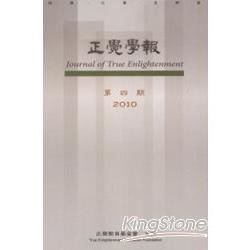
 共
共 